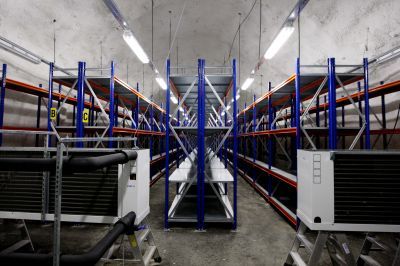Arctic seed vault hits half-million mark

Your support helps us to tell the story
From reproductive rights to climate change to Big Tech, The Independent is on the ground when the story is developing. Whether it's investigating the financials of Elon Musk's pro-Trump PAC or producing our latest documentary, 'The A Word', which shines a light on the American women fighting for reproductive rights, we know how important it is to parse out the facts from the messaging.
At such a critical moment in US history, we need reporters on the ground. Your donation allows us to keep sending journalists to speak to both sides of the story.
The Independent is trusted by Americans across the entire political spectrum. And unlike many other quality news outlets, we choose not to lock Americans out of our reporting and analysis with paywalls. We believe quality journalism should be available to everyone, paid for by those who can afford it.
Your support makes all the difference.Barely two years after it opened, a unique Arctic "doomsday" stockpile of all the world's crop seeds has reached the half-million species mark, the foundation that oversees it said Thursday.
A mold-resistant wild bean from Costa Rica, a vulnerable strawberry from a bear-infested part of Russia's Kuril islands and a host of American soybeans are among the latest additions to the Svalbard Global Seed Vault.
"Reaching the half-million mark brings mixed emotions," said Cary Fowler, executive director of the Global Crop Diversity Trust, which coordinates the collection of seeds for the vault and helps pay for its upkeep.
"While it shows that the vault at Svalbard is now the gold standard for diversity, it comes at a time when our agriculture systems are really sitting on a knife's edge," he said.
Built by the Norwegian government in a remote mountainside about 1,000 kilometres (600 miles) from the North Pole, the seed vault opened in February 2006 to bring together the seeds of all the world's food crops.
Should a natural or manmade disaster wipe out a particular species, its sponsors say, scientists could go into the vault - it has a capacity of 4.5 million samples - and try to bring it back into production.
Join our commenting forum
Join thought-provoking conversations, follow other Independent readers and see their replies
Comments